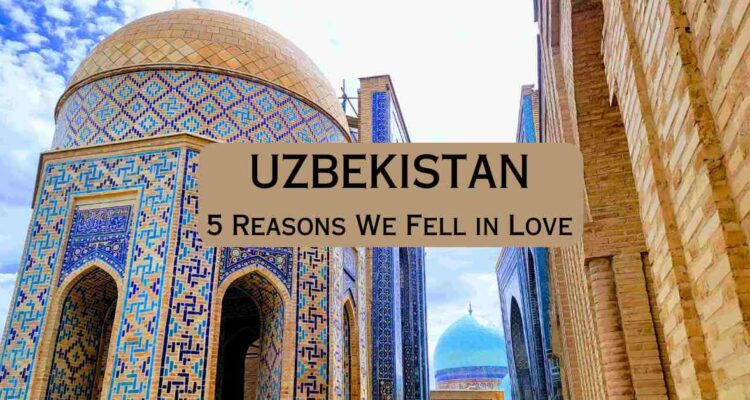Uzbekistan travel is magnificent! It is a country that is easy to fall in love with. It has a rich history, distinct culture, amazing architecture, and welcoming people who are eager to share their culture with visitors. It is also one of the cheapest countries in the world to travel through!
Here are just a few of the things that make Uzbekistan a great place to visit:
- History: This is a land of ancient civilizations. The Silk Road passed through Uzbekistan, and the country is home to many historical sites, including the Registan in Samarkand, the Ak-Saray Palace in Bukhara, and the Ichan Kala in Khiva.
- Culture: This is a land of contrasts. The country is home to a variety of ethnic groups, each with its own unique culture. Visitors can experience traditional Uzbek culture, as well as the influences of Islam, Persian culture, and the remnants of the Soviet Union.
- Architecture: this is home to some of the most beautiful architecture in Central Asia. The country is home to many mosques, cemeteries and other religious and secular buildings, such as the Tashkent Opera and Ballet Theatre and the Amir Timur Museum.
- People: The Uzbek people are some of the friendliest in the world. They are always willing to help out a stranger, and they are always happy to share their culture and food with guests.
- Cost: This is one of the cheapest countries in the world to travel through. Visitors can easily get by on a strict budget, and they can still have a great time while here.
In this post sharing 5 reasons to visit Uzbekistan you will discover a beautiful, interesting, enlightening and affordable travel destination, Uzbekistan travel is a great choice.
Getting Here – Uzbekistan Travel
Many passport holders can now visit Uzbekistan visa free. This includes all EU countries, Canada and Australia to name a few. However, US passport holders still need to get an eVisa prior to travel.
In our opinion the train is the best way to get here and travel around the country. Trains are quite modern, inexpensive and reliable.
In addition, most of the borders are open and a driver can inexpensively transport you between neighboring countries. The drive from Dushanbe, Tajikistan to Samarkand is only 297 km and around 5 hours. A stop in the Fann Mountains is highly recommended.
PRO TIP: Book your train travel between Tashkent and Samarkand a few days in advance as these tickets sell out quickly. I was able to pay online with a North American credit card.
1. Uzbekistan Attractions – Reasons to Visit Uzbekistan
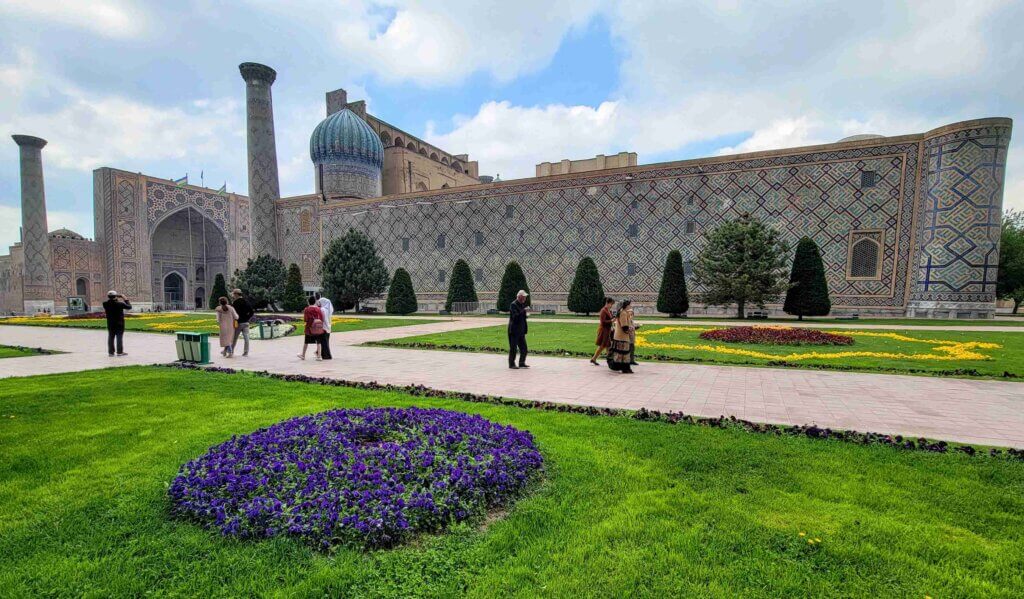
Why visit Uzbekistan, was a question we heard from family members. Well, to visit Uzbekistan is to discover a country with a rich and fascinating history. This land has been inhabited for thousands of years, and it has been home to a variety of different cultures and civilizations.
To visit Uzbekistan is to discover all this history about this country:
One of the earliest civilizations was the Sogdians (Iranians), who lived in the region from the 1st century BC to the 10th century AD. The Sogdians were a prosperous people who were known for their trade and their contributions to art, literature, and science.
In the 8th century, the Arabs conquered the land of Uzbeks and brought Islam to the region. Islam has had a profound impact on Uzbek culture, and it is still the dominant religion in the country today.
In the 13th century, this land was invaded by the Mongols. The Mongols were a brutal people who destroyed much of the country’s infrastructure and killed many of its inhabitants. However, the Mongols also brought new technologies and ideas to Uzbekistan, which helped to spur economic growth and development.
In the 15th century, this land was ruled by the Timurids, a dynasty of Turkic-Mongol origin. The Timurids were a powerful and influential dynasty, and they helped to spread Islamic culture throughout Central Asia.
In the 17th century, Uzbekistan was divided into a number of smaller khanates. These khanates were constantly at war with each other, and the region was in a state of turmoil.
In the 19th century, the Uzbek land was conquered by the Russian Empire. The Russians brought stability to the region, but they also suppressed Uzbek culture and imposed their own language and customs.
In 1991, Uzbekistan declared its independence from the Soviet Union. Since independence, the Uzbek people have been working to develop its economy and improve its relations with the West.
Today, it is a country with a rich and diverse history. The country is home to a variety of different ethnic groups, each with its own unique culture. Visitors to can experience a wide range of different cultures, from the traditional to the modern.
If you are interested in learning more about the history of this interesting land, here are some of the best places to visit:
Samarkand – Why Visit Uzbekistan

If you only visit one place in Uzbekistan, we recommend you spend those few days in Samarkand. Samarkand is a city that is known for its rich history and culture. It was once a major center of the Silk Road, and it is home to many historical sites. The city is a gorgeous glow of turquoise tiles and pretty gardens. Sites not to be missed are below:
Registan
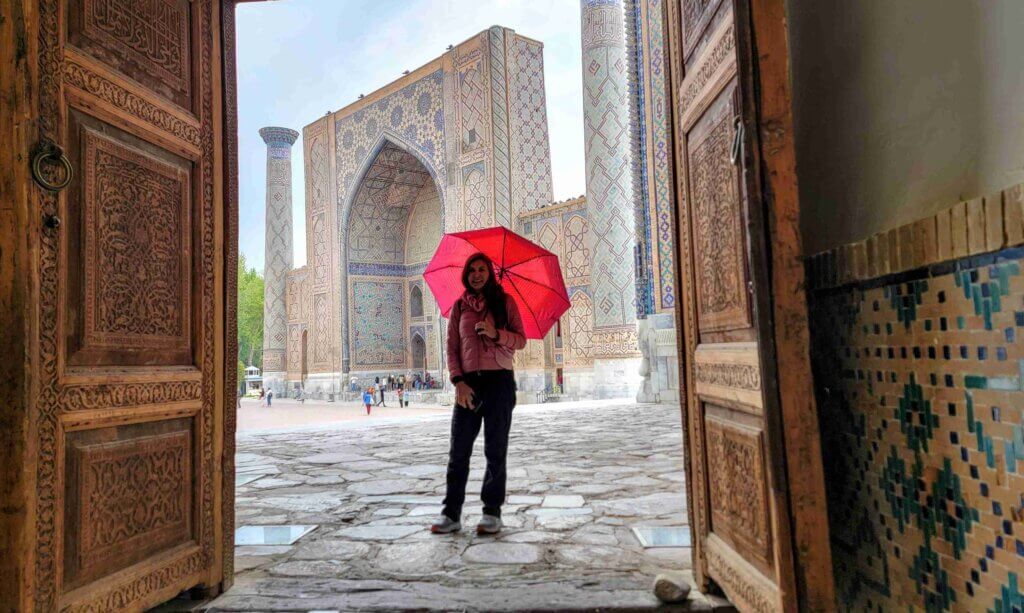
The Registan is a stunning square in Samarkand. It is a UNESCO World Heritage Site and is one of the most important squares in Central Asia. It is surrounded by three ancient madrasahs (Islamic schools), each of which is a colorful masterpiece of Islamic architecture.
The Registan was built in the 15th century during the reign of the Timurid dynasty. It was once a center of learning and culture, and today is a museum with small shops inside the coves selling local handicrafts, silk scarves and jewelry.
Bibi-Khanym Mosque

The Bibi-Khanym Mosque is a famous mosque in Samarkand that was built in the 15th century by Timur, a Central Asian conqueror and ruler.
The mosque was commissioned by Timur’s wife, Bibi-Khanym, and was intended to be the largest mosque in the Islamic world. However, it was never completed due to Timur’s death in 1405. The mosque is still an impressive sight, with its vast courtyard and soaring minarets.
Gur-e-Amir Mausoleum

The Gur-e-Amir Mausoleum is a mausoleum in Samarkand and is the final resting place of Timur, also known as Tamerlane, and his family. The mausoleum was built in the 14th century and is considered a masterpiece of Islamic architecture.
The mausoleum is a rectangular building with a turquoise dome. The exterior is decorated with intricate tilework and calligraphy. The interior is divided into two chambers. The first chamber is the tomb chamber, where Timur and his family are buried. The second chamber is the prayer hall, which is decorated with intricate tilework and calligraphy.
Shakhi Zinda Necropolis and Summer Mosque
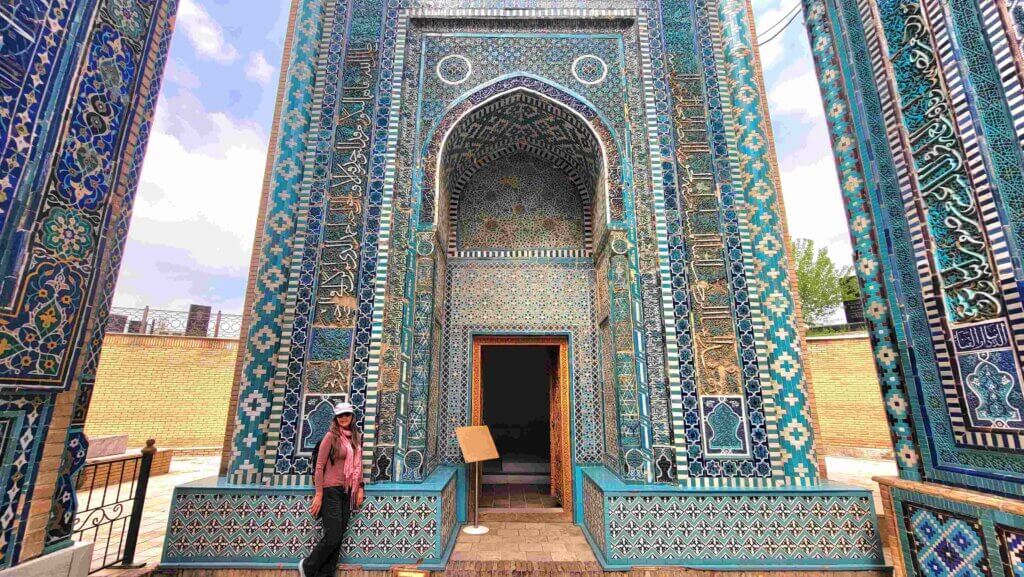
Besides the Registan this was my favorite place to visit in Samarkand.
The Shah-i-Zinda is a UNESCO World Heritage Site, and is known for its beautiful blue tiles, intricate mosaics, and carved wooden doors. The necropolis is a series of interconnected chambers and courtyards, each of which is decorated in a different style.
The necropolis was founded in the 10th century, and is believed to contain the tomb of Qusam ibn Abbas, a cousin of the Prophet Muhammad. Over the centuries, the necropolis grew to include the tombs of many other important people.
The Summer Mosque is located just south of the Shah-i-Zinda. It was built in the 15th century by Timur’s grandson, Ulugh Beg. The mosque is a beautiful example of Timurid architecture, and is known for its large dome and intricate muqarnas (stalactite-like decorations).
Bukhara – Why Visit Uzbekistan

Bukhara is a must visit Uzbekistan city. It is rich in history dating back over 2,000 years. It was once a major stop on the Silk Road, and its strategic location made it a crossroads of cultures and religions.
Today, Bukhara is a UNESCO World Heritage Site, and its many historical and architectural landmarks attract visitors from all over the world. Sites not to be mised are below:
The Ark of Bukhara
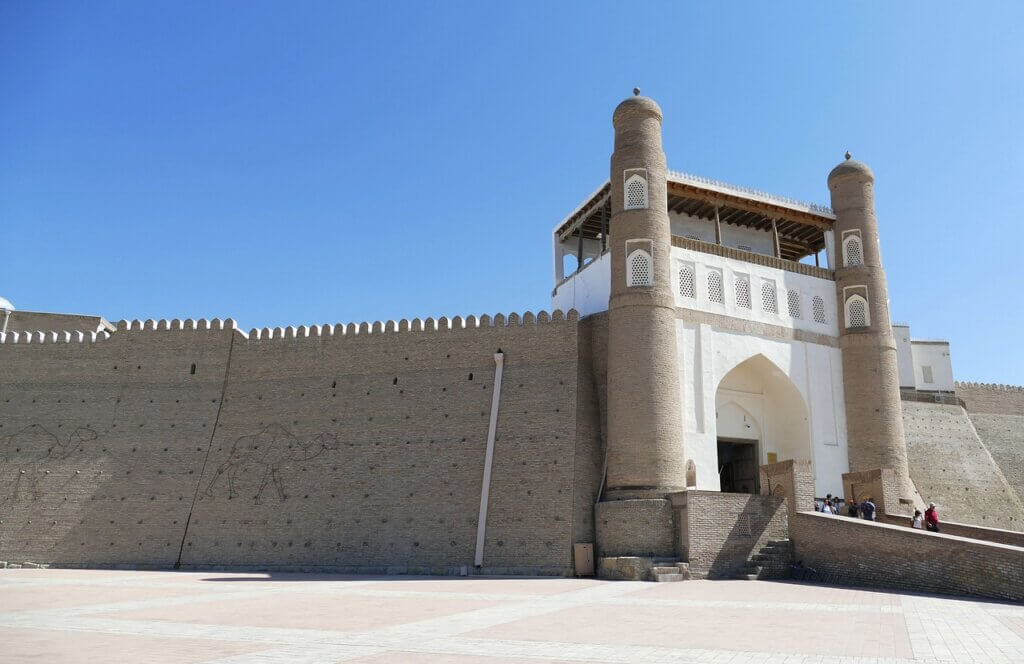
The Ark is the oldest part of Bukhara (built and occupied in 5th century AD), and it was once the city’s citadel. Today, it is a complex of ruins that includes a palace, a mosque, and a prison.
The Samanid Mausoleum
The Samanid Mausoleum is a 10th-century tomb that is considered to be one of the finest examples of Islamic architecture in Central Asia.
The Chor Minor
The Chor Minor is a group of three madrasas that are topped by distinctive blue domes.
Khiva – Why Visit Afghanistan
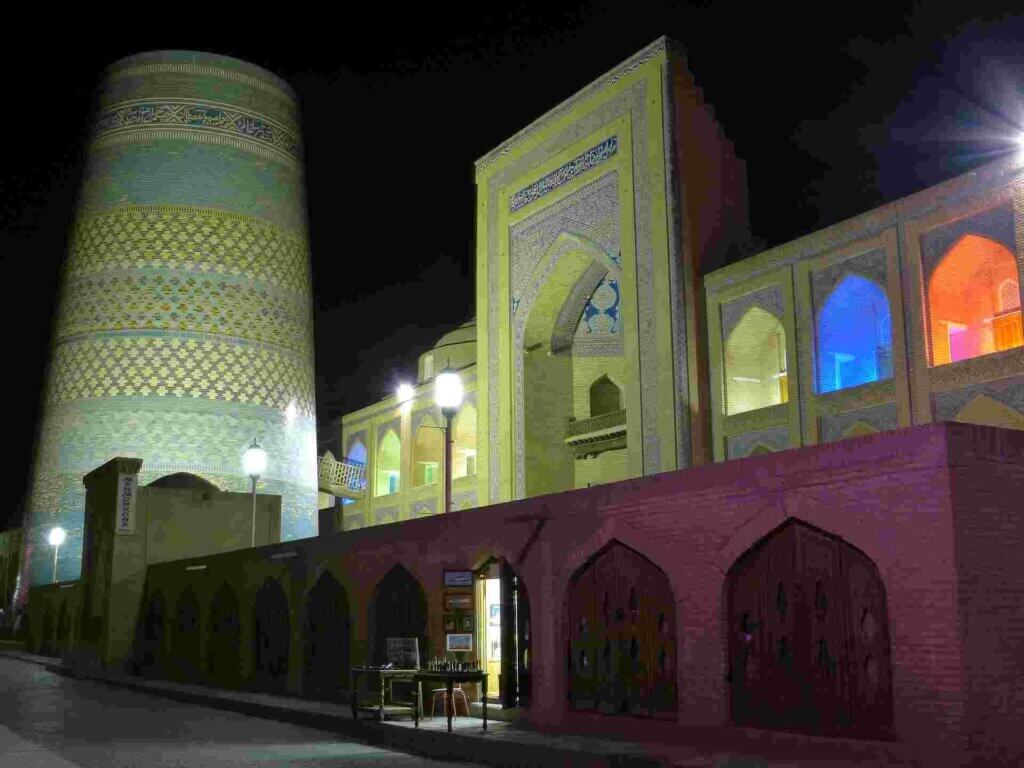
Khiva is a city with a rich history dating back over 2,000 years. It was once a major stop on the Silk Road, and its strategic location made it a crossroads of cultures and religions. Today, Khiva is a UNESCO World Heritage Site, and its many historical and architectural landmarks attract visitors from all over the world.
Some of the most popular tourist attractions in Khiva include:
The Ichan Kala
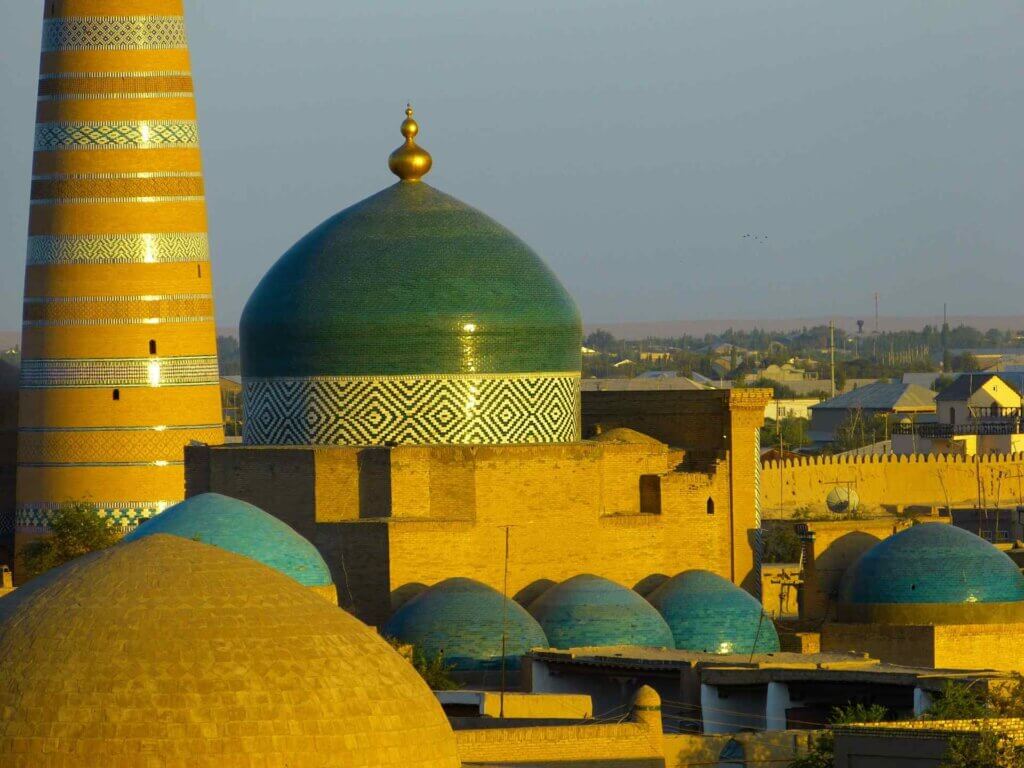
The Ichan Kala is the old walled city of Khiva. It is a UNESCO World Heritage Site, and is home to many historical and architectural landmarks, including the Kalta Minor, the Kukh-e Mu’minah Minaret, the Tosh-Khovli Palace, and the Muhammad Amin Khan Madrassah.
2. Rich and Diverse Culture – Reasons to Visit Uzbekistan
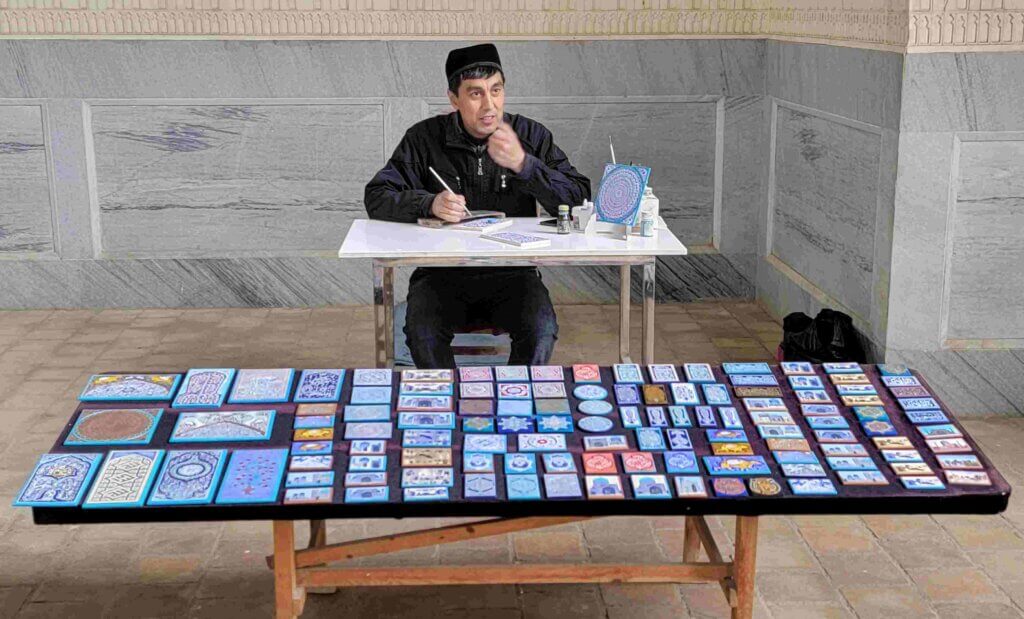
Uzbekistan travel is to travel through a country with a rich and diverse culture. It is home to a variety of different ethnic groups, each with its own unique culture and language. Visitors to Uzbekistan can experience a wide range of different cultures, from the traditional to the modern.
The most modern city is the capital Tashkent where we honestly spent way too much time. The culture here is mostly Soviet Era. As in other parts of the country, most people here also speak Russian.
There are so many cultures intertwined here with the majority (71%) being the Uzbek one followed by Russians, Tajiks, Kazakhs, and other minority groups which includes the Koreans.
In August 1937, Joseph Stalin decided to deport ethnic Koreans from the Soviet Union’s Far East to Central Asia. In less than two months, more than 170,000 people were loaded into cargo trains and transported to Uzbekistan and Kazakhstan on a horrendous journey across Siberia.
The country is home to over 130 ethnic groups, each with its own unique customs and traditions. Here are the top 5 cultures represented in Uzbekistan:
The Uzbeks
The Uzbeks are the largest ethnic group in Uzbekistan, and they make up about 71% of the population. The Uzbeks are a Muslim people, and their culture is heavily influenced by Islam. Uzbeks are known for their hospitality, their love of music and dance, and their delicious cuisine, including Plov.
The Tajiks
The Tajiks are the second largest ethnic group in Uzbekistan, and they make up about 15% of the population. The Tajiks are a Persian-speaking people, and their culture is heavily influenced by Persian culture. Tajiks are known for their love of poetry, their beautiful handicrafts, and their delicious cuisine.
The Karakalpaks
The Karakalpaks are a Turkic-speaking people, and they make up about 5% of the population of the country. The Karakalpaks are known for their traditional way of life, which includes nomadic herding and fishing. Karakalpaks are also known for their beautiful handicrafts, such as carpets and embroidery.
The Kazakhs
The Kazakhs make up about 3% of the population of the country. The Kazakhs are known for their semi-nomadic way of life, which includes herding and horsemanship. Kazakhs are also known for their love of music and dance.
The Turkmens
The Turkmens are a Turkic-speaking people, and they make up about 2% of the population of the country. The Turkmens are known for their traditional way of life, which includes nomadic herding and carpet weaving. Turkmens are also known for their wares which they sell in the bazaars, where people can find many samples of their handicrafts. Some of these include metal and wooden household utensils, tools, and furniture. Many have also supplemented their income by producing intricately designed carpets.
These are just a few of the many different cultures that can be found in Uzbekistan. The country is a melting pot of cultures, and this diversity is one of the things that makes Uzbekistan such a fascinating place to visit.
3. Architecture – Reasons to Visit Uzbekistan
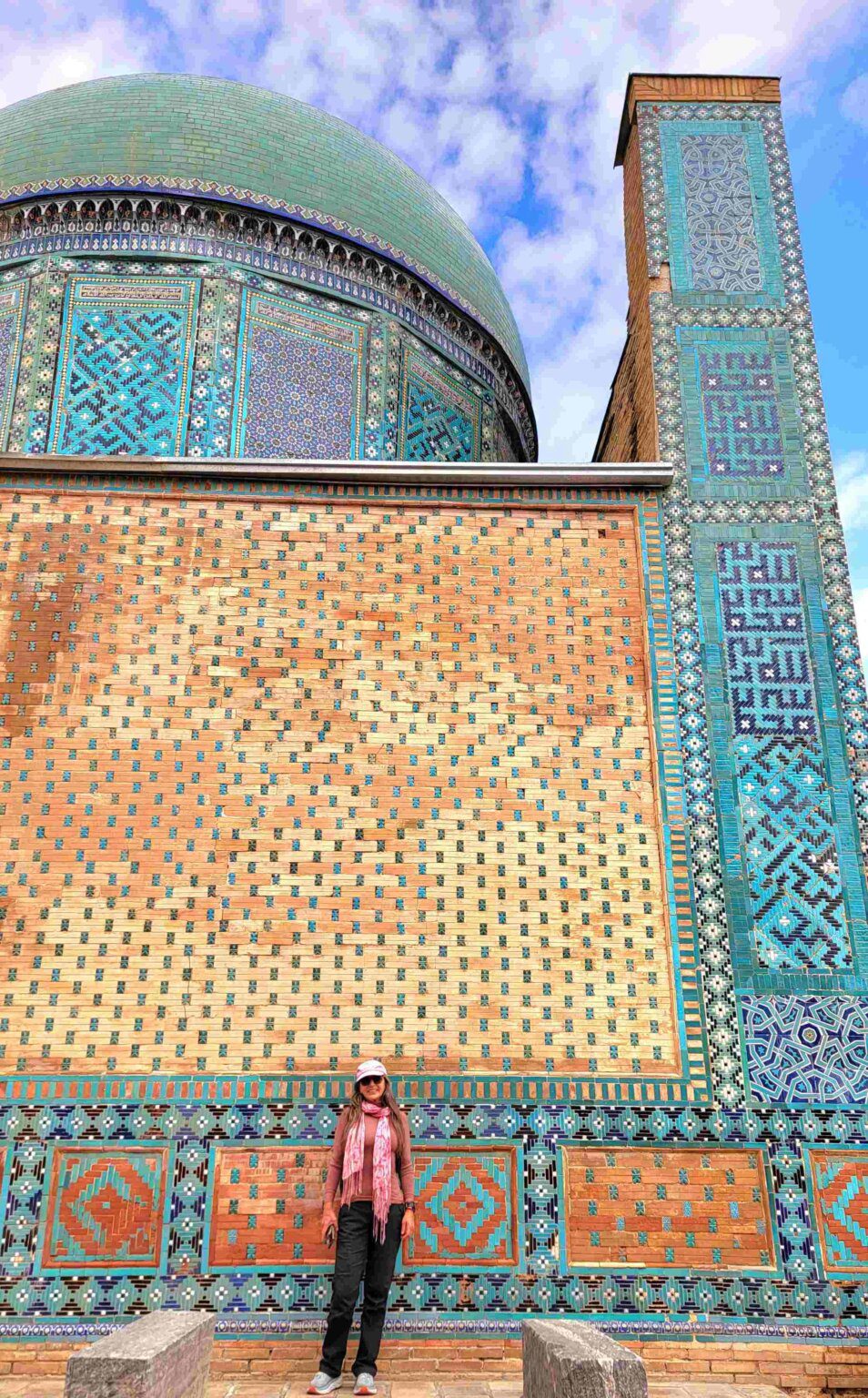
To visit Uzbekistan is to known for its stunning and diverse architecture. The country is home to a wide variety of architectural styles, from the ancient mosques and madrasas of Samarkand, Bukhara and Khiva to the Soviet-era buildings of Tashkent.
The Soviet-Era metro in Tashkent is one of the best examples of the art and architecture of that time. It is known for its beautiful and ornate stations, which are decorated with marble, mosaics, and chandeliers. The stations are also known for their deep tunnels, which can reach up to 80 meters below ground.
The Tashkent Metro is a popular tourist destination, and is often ranked as one of the most beautiful metros in the world. The metro is also a popular mode of transportation for locals, and is a convenient and efficient way to get around the city.
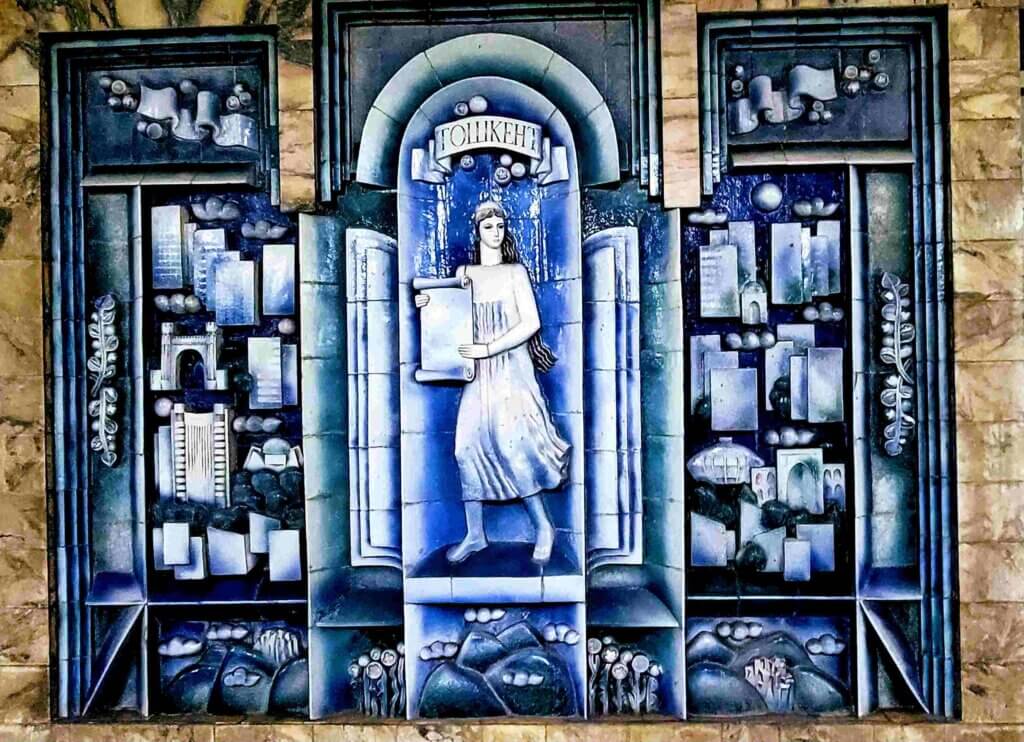
Here are some of the most popular stations on the Tashkent Metro:
- Amir Timur Station: This station is named after the famous conqueror Timur, and is decorated with statues and murals depicting his life and achievements.
- Mustakillik Square Station: This station is located at Mustaqillik Square, the central square of Tashkent, and is decorated with a large chandelier and mosaics depicting the history of Uzbekistan.
- Doʻstlik Station: This station is named after friendship, and is decorated with mosaics depicting people from different cultures and countries.
- Yunusobod Station: This station is located in the Yunusobod district of Tashkent, and is decorated with mosaics depicting the history and culture of the district.
4. Uzbek People and their Food – Reasons to Visit Uzbekistan

Uzbeks are a diverse group of people, with a rich history and culture. The country is home to over 130 ethnic groups, each with its own unique customs and traditions. Uzbeks are also a proud people, and they take great pride in their country and their heritage.
The majority of the 30 million Uzbeks are Muslim, and the official language is Uzbek. Uzbeks are well known for their hospitality, their love of music and dance, and their delicious cuisine.
One of the things that makes this country so special is its people. Uzbeks are known for their hospitality, and they are always happy to welcome visitors to their country. They are also a very friendly and welcoming people, and they are always happy to help out a stranger.
If you are looking for a unique and unforgettable travel experience, Uzbekistan travel will awe you. The people of Uzbekistan are warm and welcoming, the food is delicious, and the culture is rich and vibrant. You are sure to have a wonderful time if you visit Uzbekistan.
Music and Dance
Another thing that makes Uzbekistan so special is its music (which is heavily influenced by Middle Eastern music) and dance. Uzbeks love to sing and dance, and they have a rich tradition of both. There are many different types of music and dance here, and each region (there are 13 – 12 regions and 1 autonomous republic) has its own unique style.
Foods
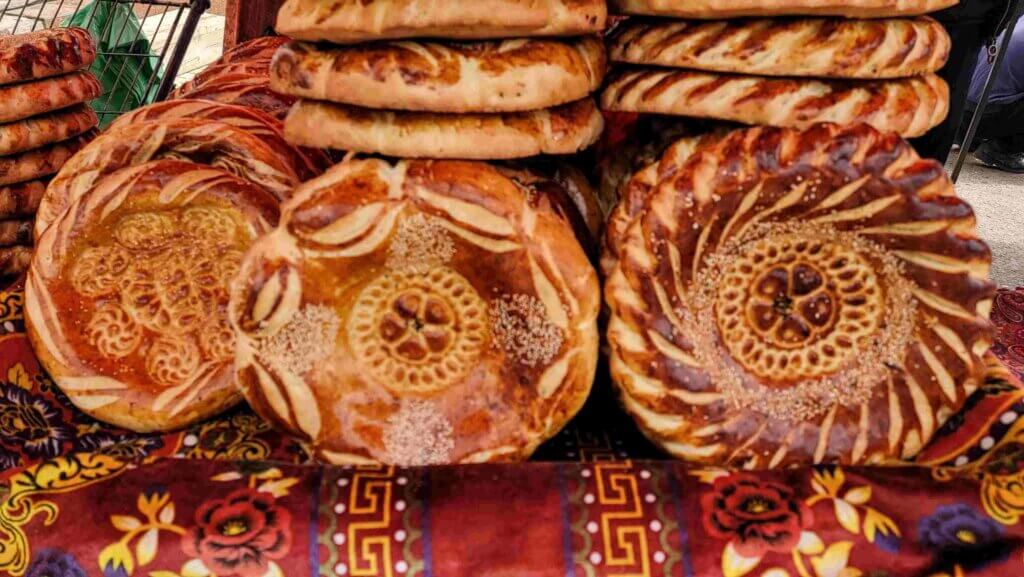
If you visit Uzbekistan you will discover some of the most delicious food in the world. Uzbek cuisine is a mix of Central Asian, Middle Eastern, and Russian influences. Some of the most popular dishes include plov (rice pilaf), samsa (fried pastries), and laghman (noodle soup).
Finding vegan food in the Stans, including this country was not an easy task. However, visiting the many food bazaars here was a true delight. So many fresh vegan salads are offered by weight (for pennies) in these markets.
And there is usually delicious round bread that does not have any dairy or eggs. You just need to ask. “Heto postnoye?”
Unfortunately, this is a country with human rights abuses especially for the LGBTQ community. While reforms adopted since President Shavkat Mirziyoyev took office in 2016 have led to improvements on some issues, Uzbekistan remains an authoritarian state with few signs of democratization. No opposition parties operate legally.
PRO TIPS:
Here are some additional tips for interacting with the people of Uzbekistan:
- Be sure to learn a few basic phrases in Uzbek. This will show the locals that you are interested in their culture and that you are making an effort to communicate with them. Hello = Salom, Thank you = Rahmat, Goodbye= Xayr
- Be respectful of the local customs and traditions. This includes dressing modestly, avoiding alcohol and drugs, and being mindful of your behavior in public.
- Be prepared to bargain when shopping. This is a common practice in Uzbekistan, and it is expected that you will haggle over the price of goods. However the prices were so low that I just gave them what they asked.
- Be open to new experiences. Uzbekistan is a country with a rich and diverse culture, and there are many things to see and do. Be sure to step outside of your comfort zone and try new things.
5. Cost – One of the Cheapest Countries in the World
Uzbekistan has been dubbed one of the cheapest countries in the world – and it is. The USD is no longer traded on the black market, but he prices are still ridiculously low. Here are some of the reasons why Uzbekistan travel is such a cheap travel destination:
Accommodation: You can find a comfortable hotel room for as little as $25 per night. There are also many guesthouses and hostels that offer even cheaper accommodation.
Food: Uzbek cuisine is delicious and affordable. You can easily find a good meal for $5 or less.
Transportation: Uzbekistan has a well-developed public transportation system that is very affordable. You can get around the country by bus, train, ride-share (Yandex) or taxi for very little money.
Activities: There are many things to see and do in Uzbekistan, and most of them are free or very affordable. You can visit historical sites, go hiking in the mountains, or explore the local markets.
If you are looking for a cheap and affordable travel destination, Uzbekistan is a great option. You can easily travel the country on a budget and still have a great time.
Wrap Up – Why Visit Uzbekistan?
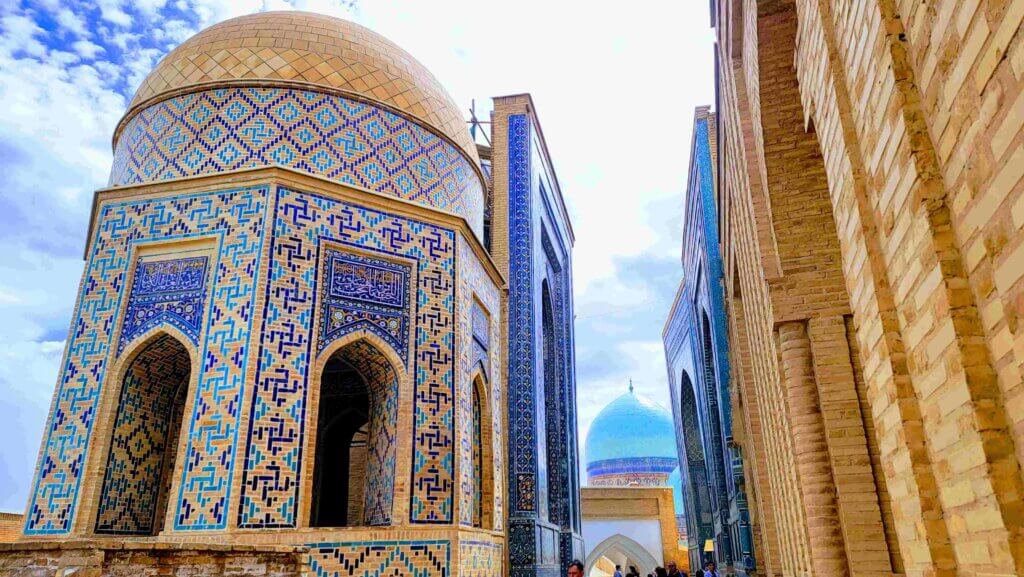
To visit Uzbekistan is to fall in love. There are so many reasons to visit Uzbekistan: Between the stunning historical cities of Samarkand, Bukhera and Khiva, the rich and diverse culture, the unusual and colorful architecture, the warm and welcoming people and the cheap cost – what is there not to love?!
It is very easy to train travel through all of the Stans. If you are already in the region, why not visit the Weirdest Country in the World – Turkmenistan as well?!
Have you been to Uzbekistan or any of the other Stans? We would love to hear about your experiences in the comments below.

